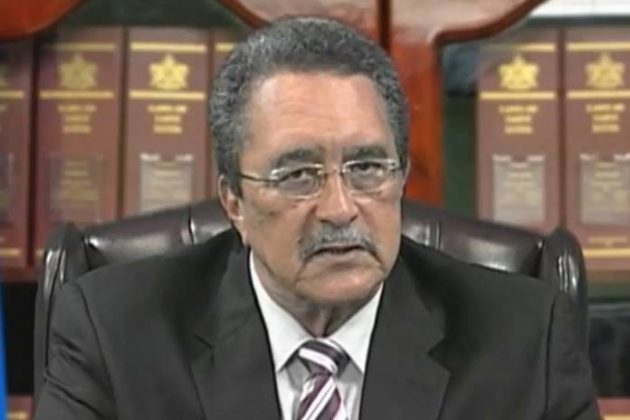IN THE CARIBBEAN, THE DOMINICAN REPUBLIC AND GUYANA HAVE THE HIGHEST ADOLESCENT FERTILITY RATES.
PANAMA CITY, Panama, Wednesday February 28, 2018 – Latin America and the Caribbean continues to be the region with the second highest teen pregnancy rate in the world, according to a joint report launched today by the Pan American Health Organization/World Health Organization (PAHO/WHO), the United Nations Children’s Fund (UNICEF), and the United Nations Population Fund (UNFPA).
The report highlights recommendations to reduce teen pregnancy, which range from supporting multisectoral prevention programmes geared toward those in the most vulnerable situations, to increasing access to contraception and sex education, among others.
The global adolescent pregnancy rate is estimated at 46 births per 1,000 girls, while adolescent pregnancy rates in Latin America and the Caribbean continue to be the second highest in the world, estimated at 66.5 births per 1,000 girls aged 15-19 years, second only to Sub-Saharan Africa, according to the report entitled ‘Accelerating progress toward the reduction of adolescent pregnancy in Latin America and the Caribbean’.
Although total fertility – the number of children per woman – in Latin America and the Caribbean has declined over the past 30 years, adolescent fertility rates have dropped minimally during that period, according to the report.
The majority of countries with the highest estimated adolescent fertility rates in Latin America and the Caribbean are in Central America, with the highest rates in Guatemala, Nicaragua, and Panama. In the Caribbean, the Dominican Republic and Guyana have the highest rates; and in South America, Bolivia and Venezuela have the highest rates.
Latin America and the Caribbean is the only region where a rising trend has been observed in pregnancies among adolescents younger than 15 years, according to UNFPA. An estimated 15 per cent of all pregnancies occur annually in girls younger than 20 years in the region, and 2 million children are born to mothers between the ages of 15 and 19 years.
“Adolescent fertility rates remain high in our region, affecting mostly population groups living under conditions of vulnerability and highlighting major inequities between and within countries. Teen pregnancy can have a profound effect on girls’ health over their life course,” said PAHO Director Carissa Etienne.
“It not only hinders their psychosocial development, but is also linked to poor health outcomes and higher risks of maternal death. In addition, their children are at higher risk for poor health and social outcomes.”
Children born to adolescent mothers are more likely to suffer low birthweight and malnutrition. +Info at: https://t.co/fs4sI2fo6C#YouthHealth #TeenPregnancy#AdolescentHealth #UniversalHealth pic.twitter.com/NYzkdPfZBA
— PAHO/WHO (@pahowho) February 27, 2018
Maternal mortality is one of the top causes of death among adolescents and youth aged 15-24 years in the region of the Americas. In 2014, approximately 1900 adolescents and youth died as a result of complications occurring during pregnancy, childbirth, and post-partum periods. At the global level, the risk of maternal death is doubled in mothers younger than 15 years in low- and middle-income countries. Perinatal deaths are 50 per cent higher among infants born to mothers under 20 years when compared to those born to mothers 20–29 years old, according to the report.
“The lack of information and restricted access to comprehensive sex education and adequate sexual and reproductive health services are directly related to adolescent pregnancies. Many of these pregnancies are not a deliberate choice, but rather the result, for example, of an abusive relationship,” said Esteban Caballero, Regional Director of UNFPA for Latin America and the Caribbean. “Reducing teenage pregnancy means ensuring access to effective contraceptive methods.”
The report found that in the majority of countries adolescent girls with no education or only primary education are up to four times more likely to get pregnant than girls with secondary or higher education. Girls whose households are part of the lowest wealth quintile are also three-to-four times more likely to become mothers compared with those in the highest quintile in the same country. Indigenous girls, especially in rural areas, have a higher probability of becoming pregnant at a young age.
“Many girls and adolescents must abandon school because of pregnancy, which has a long-term impact on their opportunities to finish their education and join the workforce, as well as their ability to participate in public and political life,” noted Marita Perceval, Regional Director of UNICEF. “As a result, adolescent mothers are exposed to situations of greater vulnerability and the repetition of patterns of poverty and social exclusion.”
The report outlines several recommendations to reduce adolescent pregnancy, focusing on actions from legislation to education at the individual, family, and community levels:
- Promote measures and norms that prohibit child marriage and early unions before the age of 18;
- Support evidence-based pregnancy prevention programmes that involve multiple sectors and target the most vulnerable groups;
- Increase the use of contraception;
- Prevent coerced sex;
- Significantly reduce pregnancy interruption in unsafe conditions;
- Increase the use of skilled prenatal, childbirth, and postpartum care;
- Include youth in pregnancy prevention programme design and implementation; and
- Create environments that enable gender equality and help adolescents exercise their sexual and reproductive rights.
Related Articles








